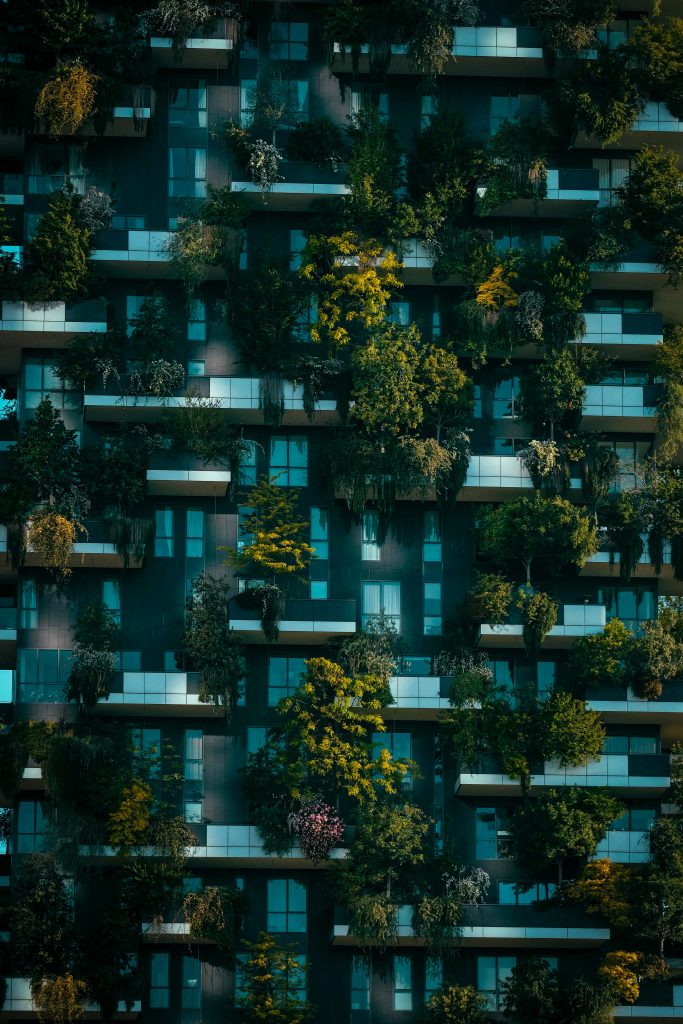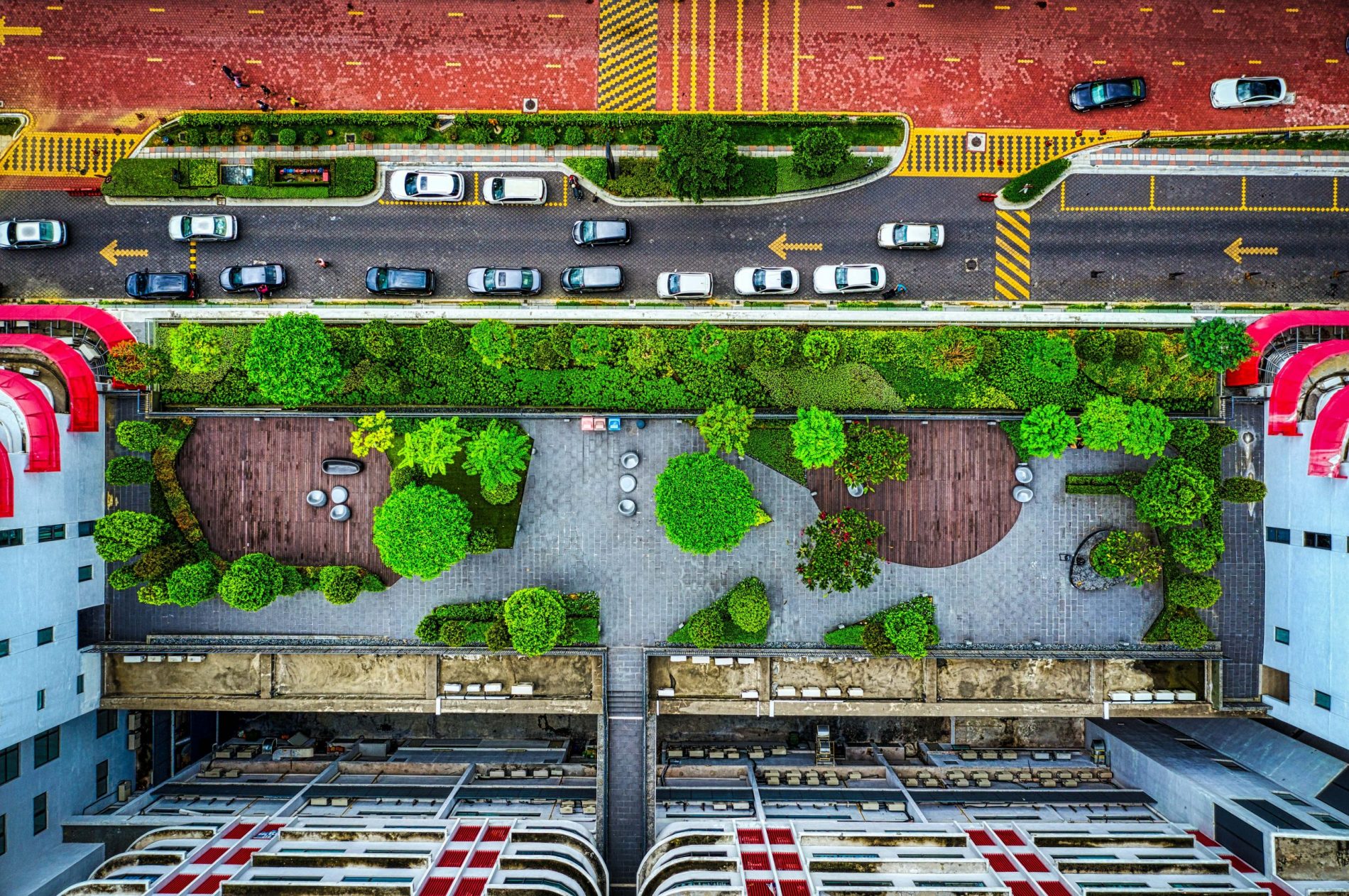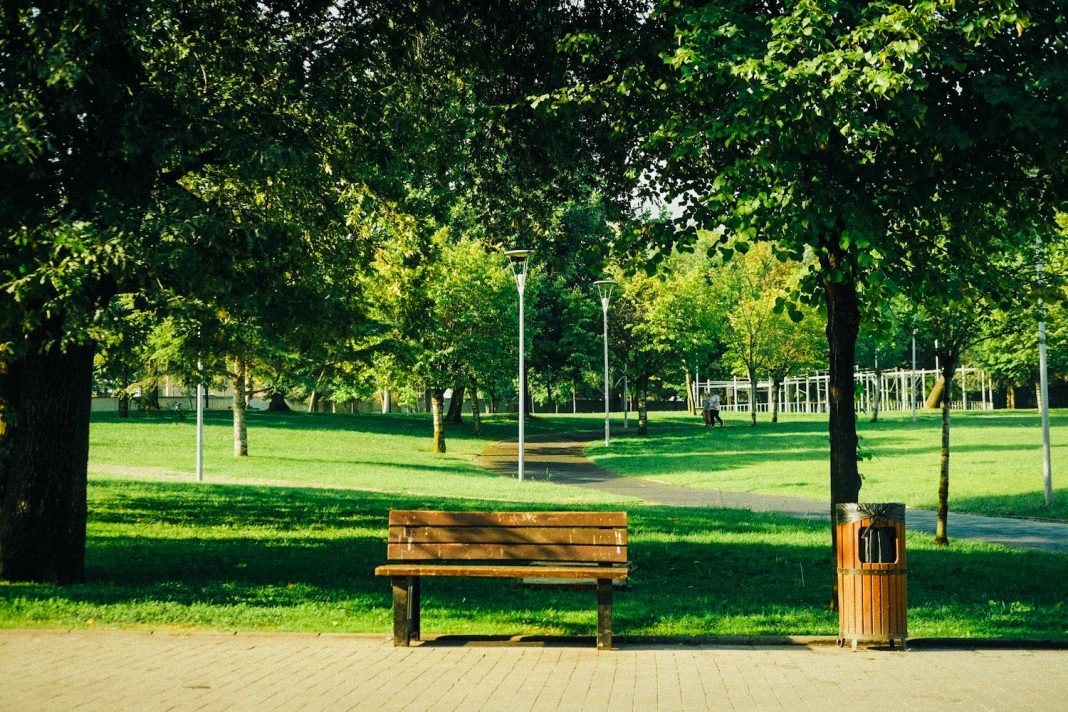The basis for every city-changing venture is to do your research and to know your facts and data. For this very purpose, we have gathered the most important, surprising, or even uplifting ones in this list, sure to impress any know-it-all enthusiasts out there.
Did You Know?
Cities and Citizens vs. Plants and Animal Life
- Cities use up 78% of the world’s energy and produce more than 60% of greenhouse gas emissions, all while covering less than 2% of our planet.
- For each new resident, wealthy countries add on average 355 m2 of built-up area, middle-income countries 125 m2, and low-income ones 85 m2.
- The most urbanised regions are North America (approx. 82% of citizens living in urban areas), Latin America and the Caribbean (approx. 80% living in urban areas), and Europe (approx. 73% living in urban areas).
- Africa and Asia are mostly rural, with 40% and 48% of citizens living in urban areas.
- World Health Organization (WHO) recommends for every urban citizen to be able to reach at least 0,5–1 hectares (ha) of green space within a 300-meter linear distance from their homes.
- Cities with the highest percentage of green spaces are Oslo (68%), Moscow (54%), and Singapore (47%). Cities with the lowest percentage are Dubai (2%), Istanbul (2.2%), and Mumbai (2.5%).
- On average, we spend 90% of our time indoors.
- Lower-income residents of cities are expected to live 10 years less than those of higher incomes due to accessibility to green spaces for wealthier people (living in open, leafy areas), and the poorer living in overcrowded, concrete areas.
- Due to rapid urban development, 8% of terrestrial vertebrate species have been labelled as endangered.
- Urban areas have the ability to home both native and non-native species and can support endemic species.
The Importance of Vegetation

- Greenery integrated into buildings has been around for many centuries. One example is the Hanging Garden of Babylon.
- In the ancient Greek and Roman empires, plants such as olive trees and grapevines were purposefully used as climbing plants for the walls.
- In the era of industrial cities, green spaces (e.g. parks, gardens) began to be used as landmarks, to beautify the cities.
- A mature tree absorbs 21.6 kg of carbon per year and releases enough oxygen to support two human beings.
- Green walls improve the quality of urban air – plants absorb CO2, heavy metals and dust particles circulating in the air.
- Greenery outside of schools’ windows improves their students’ grades and tests results.
- Citizens who grow up with less green spaces nearby have 55% increased risk of developing depression, anxiety, and substance abuse.
- Community forests in the size of a basketball court provide shade, attract plants and animals, and even store carbon.
- Tiny forests, in comparison to a conventional plantation, grow 10-times faster, are 30-times denser, and 100-times more biodiverse.
- Green areas improve property prices by as much as 15%.
- Neighbourhoods with vegetation can be up to 14°C cooler and can help fight the heat island effect.
- Tree-planting is one of the most cost-effective ways to control CO2.
Types of Greenery in Cities
- 6th of June: World Green Roof Day.
- The membrane of a conventional roof needs major repairs every 20–25 years, while a green roof membrane can last up to twice as long.
- Green roofs reduce heat flow across the roofing system and cut the heat leaving the building in winter by up to 70%, while reducing the heat entering the building in summer by more than 85%.
- Among other benefits, green roofs purify the air, reduce noise, manage water, regulate city’s temperatures, aid biodiversity, offer the possibility for rooftop gardening, and increase the real estate value of the property.
- The first green wall dates back to 1938.
- Just 1 m2 of living wall produces 1.7 kg of oxygen.
- Singapore’s ‘Elmich’s VGM Green Walls’ is the world’s largest vertical greenery installation, covering 5,300 m2.
- Benefits of community gardening include reducing food mileage, improving health and well-being of its users, reducing pollution effects, establishing a sense of community, etc.
- Ghana’s urban agriculture supplies up to 90% of the city’s fresh vegetables.
- Having plants at home improves memory and attention span by 20%.
- Indoor vegetation increases human creativity by 15%.
- Green offices reduce stress, improve blood pressure, heart activity, brain activity, and reduce muscle tension.

These figures just show how truly important having a healthy blue-green infrastructure is, not just for our cities, but generally for our beautiful planet as well. So, now that you’ve got to grips with the basic information, roll up your sleeves, pour yourself a cup of coffee, and get to work – your city needs you.


